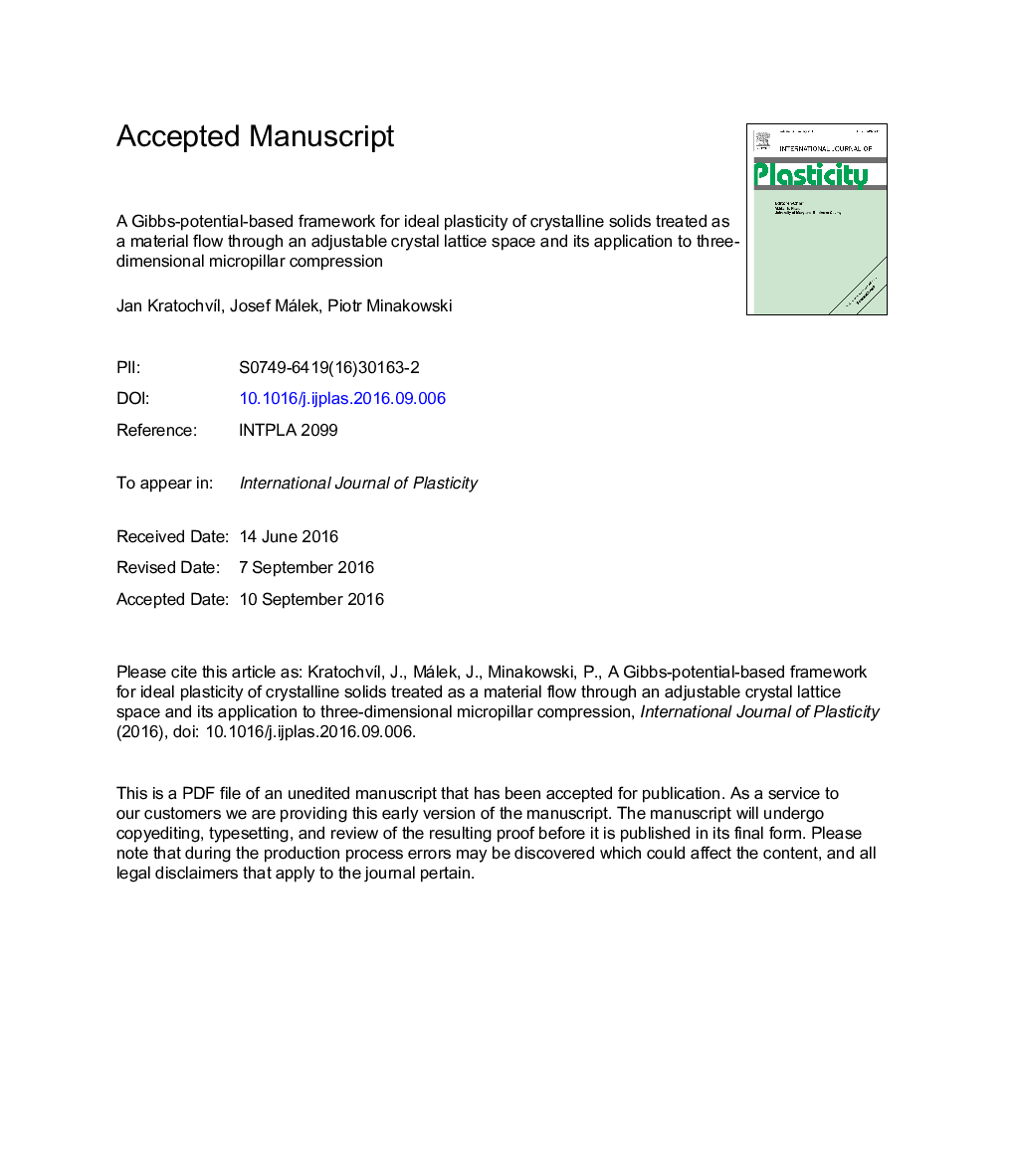| Article ID | Journal | Published Year | Pages | File Type |
|---|---|---|---|---|
| 5016808 | International Journal of Plasticity | 2016 | 27 Pages |
Abstract
We propose an Eulerian thermodynamically compatible model for ideal plasticity of crystalline solids treated as a material flow through an adjustable crystal lattice space. The model is based on the additive splitting of the velocity gradient into the crystal lattice part and the plastic part. The approach extends a Gibbs-potential-based formulation developed in Rajagopal and Srinivasa (2011) for obtaining the response functions for elasto-visco-plastic crystals. The framework makes constitutive assumptions for two scalar functions: the Gibbs potential and the rate of dissipation. The constitutive equations relating the stress to kinematical quantities is then determined using the condition that the rate of dissipation is maximal providing that the relevant constraints are met. The proposed model is applied to three-dimensional micropillar compression, and its features, both on the level of modelling and computer simulations, are discussed and compared to relevant studies.
Keywords
Related Topics
Physical Sciences and Engineering
Engineering
Mechanical Engineering
Authors
Jan KratochvÃl, Josef Málek, Piotr Minakowski,
